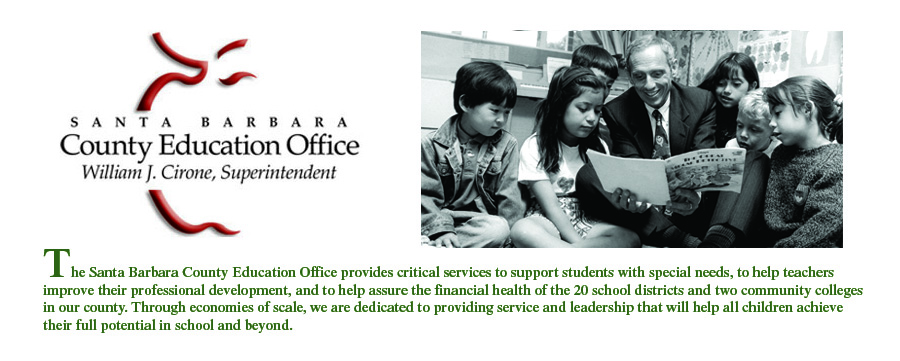By Bill Cirone, Santa Barbara County Superintendent of Schools
“Knowledge is power,” Francis Bacon once said. The California Department of Education, as part of its commitment to continuous improvement, accountability, and transparency, has been developing a dashboard to help educators, parents, and communities across the state access important information about K-12 districts and schools.
You might ask, why a dashboard and how does that relate to “knowledge is power?” Think of it this way: You can’t drive a car by only watching the speedometer. You also keep your eye on the road, check the mirrors, monitor the gas tank, and pay attention if the engine light comes on. Similarly, the California School Dashboard features easy-to-read reports on multiple measures of school success, including test scores, graduation rates, English learner progress, and suspension rates. The Dashboard is part of California’s new school accountability system, which recognizes California’s future success depends on tapping into the potential of all students, so they graduate ready for college, careers, and life. For schools to reach this goal, teachers, parents and the community need clear and useful measures of progress.
In the past, accountability systems for districts and schools relied solely on test scores. But one test taken on one particular day doesn’t provide a complete picture of all the ways schools are helping students succeed. The focus on multiple measures will help all districts target areas to grow and improve.
Further, highlighting different aspects of student performance in an easy to digest way will give a more complete and understandable picture of a school’s progress. The Dashboard also reports on growth to show a school’s trajectory over time, while helping districts see disparities in achievement across various groups of students or schools.
As an accountability tool, the Dashboard will also help the state identify schools, including charter schools, and districts needing targeted assistance.
The Dashboard is a work in progress, and metrics and reports will be added over time. It recognizes that the exciting and institutional changes taking place in education will take time to fully implement, and requires an ongoing conversation with our community on both how we’re doing and how we can do better.
To assist in those conversations, the Dashboard is being designed as a transparency tool so parents and community members can sit in the driver’s seat looking at a dashboard that provides the multiple indicators needed to be fully participating partners.
I applaud the California Department of Education and school districts for their continued and strong commitment to a series of shifts in public education that has raised the bar for student learning, transformed testing, and places the focus on equity for all students.
As businessman Donald Bren said, “Future public education will require involvement and collaboration among various local, civic, private and non-profit entities, a concept referred to as community entrepreneurship.” The Dashboard is a tool that enables and strengthens that partnership and
entrepreneurship on behalf of our children.
